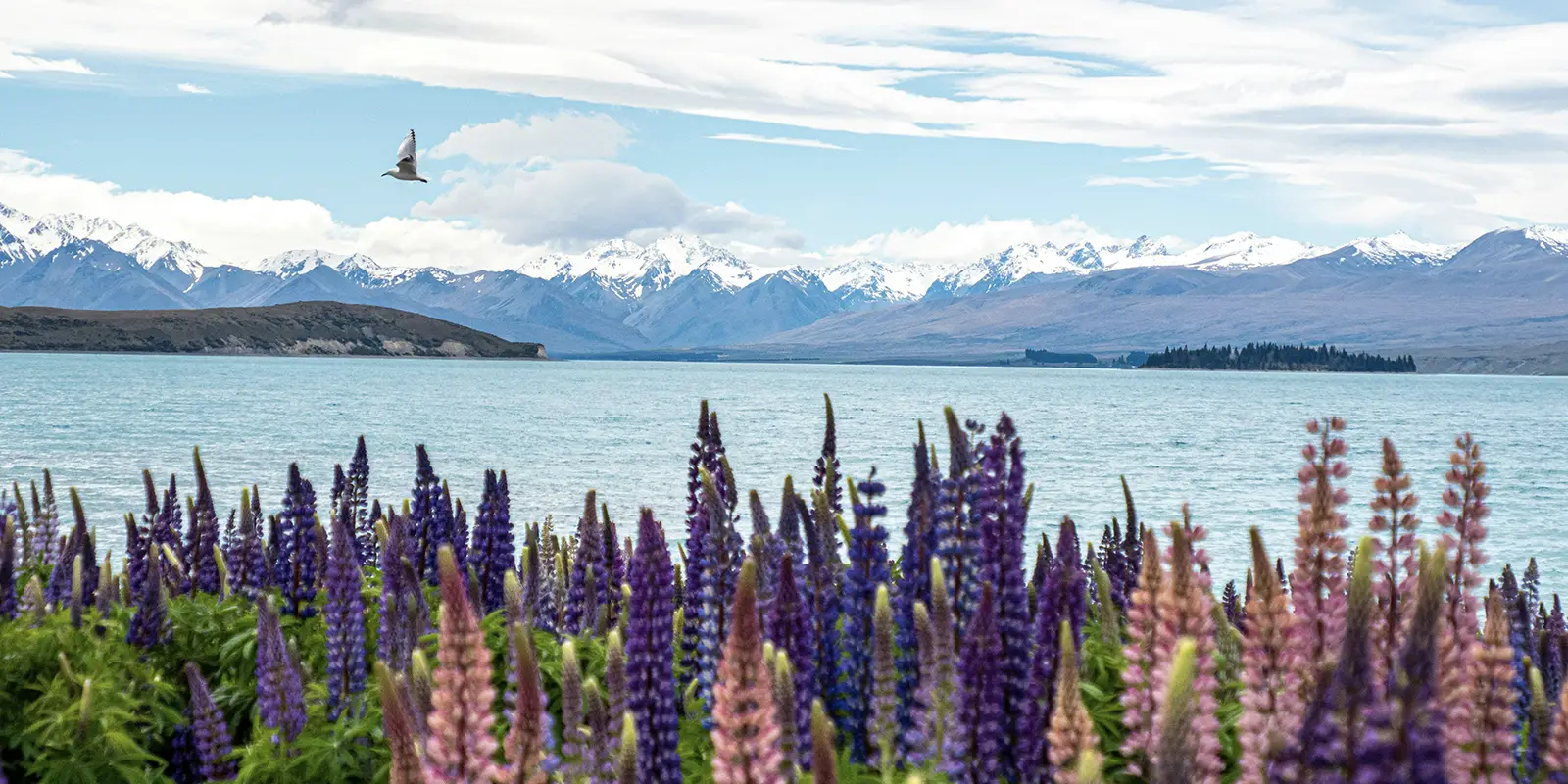Lake Tekapo entices travelers with promises of celestial wonder and cultural intrigue. The lake is renowned for its unrivaled stargazing opportunities against a backdrop of pristine beauty. Beyond the shimmering night skies lies a rich tapestry of Maori legends and traditions, weaving tales of spiritual significance and cultural heritage into the fabric of this enchanting destination.
About Lake Tekapo
Lake Tekapo boasts some of the clearest and darkest skies in the world. With minimal light pollution, the Milky Way stretches across the heavens, revealing countless stars, constellations, and nebulae. Throughout the year, Lake Tekapo offers excellent opportunities to witness meteor showers, such as the famous Perseids or Geminids. Occasionally gracing the skies above the lake with its ethereal dance of colorful ribbons and curtains of light, the Southern Lights, or Aurora Australis, mesmerize observers.
The cultural tapestry of Lake Tekapo is just as fascinating. The traditional Maori name for Lake Tekapo is “Takapo,” which carries a significant legend behind its origin. According to Maori tradition, Takapo translates to “to leave in haste at night.” The legend tells the story of two Maori chiefs who were traveling near the lake under the cover of darkness, likely engaged in some form of activity or expedition. As they attempted to depart the area swiftly and discreetly, they were unexpectedly caught by the rising sun.
The sudden light exposed their presence, preventing their planned escape. Consequently, the chiefs were transformed into stone pillars, forever marking the entrance to the Lindis Pass, a nearby mountain pass.
Best Time to Visit Lake Tekapo
Lake Tekapo is a year-round destination, so the best time to visit largely depends on personal preferences and desired activities. Summer, from December to February, offers pleasant weather ideal for outdoor adventures such as hiking, mountain biking, and water sports. Autumn, from March to May, presents a tapestry of vibrant hues as the surrounding landscapes transform into a kaleidoscope of red, orange, and gold.
Winter, from June to August, blankets the region in snow, creating a serene winter wonderland perfect for skiing, snowboarding, and soaking in hot pools. Spring, from September to November, heralds the arrival of blooming wildflowers and rejuvenated landscapes, offering a refreshing and picturesque backdrop for exploration.

Things to Do at Lake Tekapo
Stargazing stands out as the prime attraction at Lake Tekapo, and the iconic Mount John Observatory offers an exceptional setting to experience the magic of the night sky. The guided tour offered at Mount John Observatory allows participants the opportunity to see planets, distant galaxies and more through powerful telescopes. Another attraction close to the lake is the charming Church of the Good Shepherd, a quaint stone church that boasts breathtaking views of Lake Tekapo and the Southern Alps. Built in 1935, this iconic landmark offers a peaceful sanctuary for reflection and contemplation.
Just a brief drive from the church, tourists can indulge in relaxation and rejuvenation at Tekapo Springs, where a range of geothermal hot pools awaits. The springs are conveniently located within walking distance from the lake, which provides numerous recreational opportunities. Popular water sports such as kayaking, canoeing, powerboating, and water skiing thrive at Lake Tekapo. Swimming is equally favored, with one of the prime spots situated adjacent to Tekapo Springs.
Scenic helicopter flights provide unmatched vistas for those seeking an elevated view of the lake. Alternatively, hikes or mountain bike excursions offer stunning aerial perspectives. The Mt. John Summit Circuit Track and Cowans Hill Walkway are among the most favored hiking trails at Lake Tekapo, offering easy to moderate routes for exploration. Lake Tekapo Regional Park offers several mountain biking trails catering to various skill levels. The trails wind through tussock grasslands, pine forests, and along the shores of Lake Tekapo, providing beautiful scenery along the way.
Lake Tekapo Stats & Facts
At the center of New Zealand’s South Island lies Lake Tekapo, nestled within the Mackenzie Basin. Spanning an approximate surface area of 32 square miles (83 square kilometers), it reaches a maximum depth of around 390 feet (120 meters). At an altitude of around 2,330 feet (710 meters) above sea level, Lake Tekapo claims its identity as an alpine lake.
Lake Tekapo is home to an array of flora and fauna. Among the diverse flora, vibrant patches of Russell lupins grace the lake’s shores, painting the landscape with hues of purple, blue, and yellow during the summer months. Tussock grasslands cover the hillsides, while alpine meadows host the iconic Mount Cook lily in bloom.
As for fauna, the waters of Lake Tekapo are inhabited by the black swan and pied stilt, with occasional sightings of the crested grebe and black stilt for those fortunate enough. Rainbow and brown trout dart through the crystal-clear waters of the lake, tempting anglers with their elusive presence. Beyond the shores, red deer roam the forests, their noble presence a testament to the area’s rich biodiversity.
Lake Tekapo Weather & Climate
Lake Tekapo enjoys a temperate climate characterized by warm summers and cold winters. Summer typically sees average high temperatures ranging between 66°F to 70°F (19°C to 21°C), while winter often brings below-freezing temperatures, occasionally accompanied by snowfall. The region experiences relatively low rainfall throughout the year, mainly because the Southern Alps act as a barrier to moisture-laden winds coming from the Tasman Sea.







